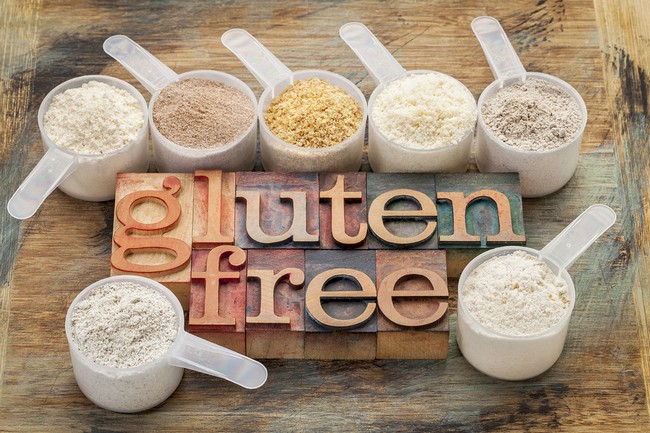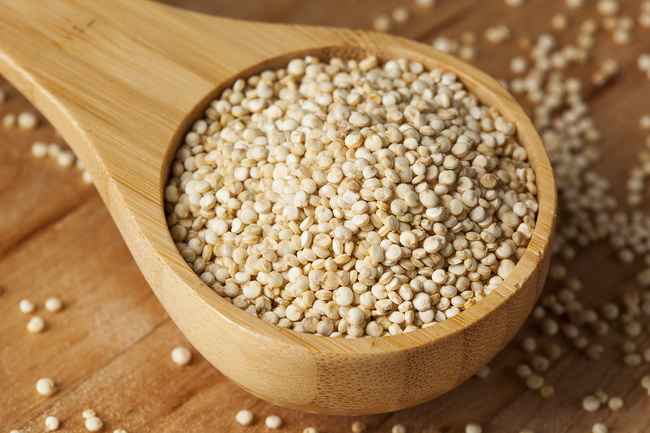- Make It Yourself Lavender Heart-Shaped Bath Bombs!
- 20 Things You Never Knew About “Down There”
- 12 Best Foods For Those Suffering From Arthritis Pain
- 12 Personal Hygiene Mistakes Almost Everyone Makes (Mom Never Told You About #4!)
- 15 Medicinal Plants And Herbs From The Cherokee People
- 12 Mind-Blowing Benefits Of Drinking Coconut Water During Pregnancy
- 12 Outstanding Winter Foods That Won’t Fatten You Up Like A Christmas Turkey
Top 10 Reasons Why You Should be Eating More Quinoa

Photo credit: bigstock
Quinoa, that delicious alternative to rice that everyone loves. Oh, you haven’t tried it yet? You don’t’ know what you’re missing! Although quinoa is native to the Andean mountains South America, it’s now known and eaten all around the globe. The leaves can be eaten much the same way spinach can but it’s mainly grown for its seeds. Quinoa is cooked like rice and comes in red, white, and black colors. In fact quinoa is so popular that the United Nations proclaimed it “The International Year of Quinoa” in 2013. Quinoa is super nutritious and helps to provide vital nutrients to the world’s poor.
Quinoa is gluten free, yet packed with fiber, minerals, and protein. Take a look at the top 10 proven health benefits of quinoa.
1. It’s Weight Loss Friendly
If you are looking to lose weight, you need to consume fewer calories than your body burns. Certain foods are known to make this process easier by boosting your metabolism or by reducing your appetite. The good news here is that quinoa has both of these properties! Quinoa is high in protein, which can both reduce your appetite while increasing your metabolism and its high fiber content will make you feel fuller, so you should eat less overall. Quinoa also has a low glycemic index and studies show that those who eat these types of foods generally have a lower caloric intake.
2. Quinoa is a True Superfood
Quinoa is so packed full of nutrition, it was once called the “mother of all grains.” This nutritious grain has been eaten for thousands of years in South America and was a very important crop for the Inca’s. It was virtually unheard of in American until about a decade ago. These days you can find quinoa all over the globe because it packs so much nutrition into one little grain.
Just one cup of cooked quinoa has 8 grams of protein! 5 grams of fiber, 39 grams of carbs, with only 4 grams of fat and 222 calories. It also contains tons of vitamins and minerals including manganese, phosphorus, magnesium, folate, copper, zinc, iron, potassium, and calcium. It’s a non-GMO food and even though it’s a seed, it’s classified as a whole grain food.
3. Packed with Antioxidants
Antioxidants are very important to our health as these compounds kill free radicals that cause aging and many other diseases such as arthritis, Alzheimer’s and even cancer. In one study completed in 2009, scientists look at 10 Andean grains; 5 cereals, 3 pseudo-cereals, and 2 legumes. Quinoa had the highest antioxidant levels of any of the 10 substances studied. Sprouted quinoa seeds have even more antioxidant power, so you might want to consider adding a few quinoa sprouts to your next salad.
Continue to Page 2

Photo credit: bigstock
4. Full of Powerful Flavonoids
When we eat real food, the health benefits we receive go beyond the typical vitamins and minerals that we know, many contain important trace nutrients and antioxidants that give our body the best nutrition available. We should also add flavonoids to this list. Flavonoids are plant antioxidants that have almost unbelievable benefits to our health. The two most studied flavonoids are quercetin and kaempferol and quinoa has a lot of both of these flavonoids. In fact, quinoa has higher levels of quercetin than cranberries do! These flavonoids have anti-viral, anti-cancer, anti-inflammatory, and anti-depressant effects in studies done with animals.
5. Super High in Fiber
Although varieties can vary, quinoa still has between 10 and 16 grams of fiber for each 100 grams of uncooked quinoa. This means quinoa can have between 17 to 27 grams of fiber per cup. This is quite high, more than twice as high as any other grain. Most of the fiber is insoluble fiber, which is good for your digestion. It does contain some soluble fiber which is good for lowering cholesterol, increase your sense of fullness, (which can help with weight loss), and actually lowers blood sugar levels. Find out more fiber rich foods.
6. Perfect for those who are Gluten Intolerant
A study done in 2013 showed that about 1/3 of Americans are trying to eliminate or avoid gluten in their diets (See top signs that you are gluten intolerant). This can be a healthy thing, as long as it’s based on foods that are naturally gluten free and not eating those processed “gluten free” manufactured foods.
Eating quinoa instead of the typical refined “gluten free” starches such as potato, corn, or rice flour, can vastly increase your overall nutrient and the antioxidant value of your diet.
7. High in Protein and Amino Acids
Protein is comprised of amino acids. Some of these are called “essential” amino acids because our bodies do not make them, so we must obtain them from our diets. Quinoa is a complete protein because it has all the essential amino acids, unlike many other protein sources. One cup of cooked quinoa has 8 grams of protein.
Continue to Page 3

Photo credit: bigstock
8. Low Glycemic Index
A glycemic index is a measure of how quickly certain foods raise blood sugar levels. Eating foods that rate high on the glycemic index stimulates the appetite and contributes to obesity. These types of foods have been linked to many of chronic diseases that are prevalent in America today. Quinoa has a glycemic index of 53, which is quite low.
9. High in Minerals
Our modern day diets deprive us of a lot of vital nutrients, especially iron, zinc, potassium, and magnesium. The good thing here is that quinoa is very high in all 4 minerals, especially magnesium. In fact, one serving of quinoa has 30 percent of your recommended daily intake of magnesium. Be sure to soak quinoa before cooking it in order to make these minerals more available to your body.
10. Supports Metabolic Health
Since quinoa has such terrific beneficial nutrients, it makes sense that quinoa could improve metabolic health. In one study involving rats, adding quinoa to a diet that was high in fructose, it almost completely negated the negative effects of the fructose.
Another study involved humans who consumed quinoa instead of the usual gluten free pastas and breads. The subjects all had lower blood sugar levels, triglyceride levels, as well as insulin levels. Although these studies were small, they indicate that eating quinoa can improve metabolic health.
Quinoa is super easy to incorporate into your diet; it tastes great and goes with just about anything you have in mind for lunch or dinner. Add quinoa to your diet today.
Sources:
Fao.org
Nutritiondata.self.com
Ncbi.nlm.nih.gov
Sciencedirect.com
Sciencedirect.com
Npd.com
(By the way, if you’re enjoying this article, you may want to subscribe to the Naturalon’s free newsletter; get breaking news alerts on GMO’s, fluoride, superfoods, natural cures and more… You privacy is protected. Unsubscribe at any time.)
































